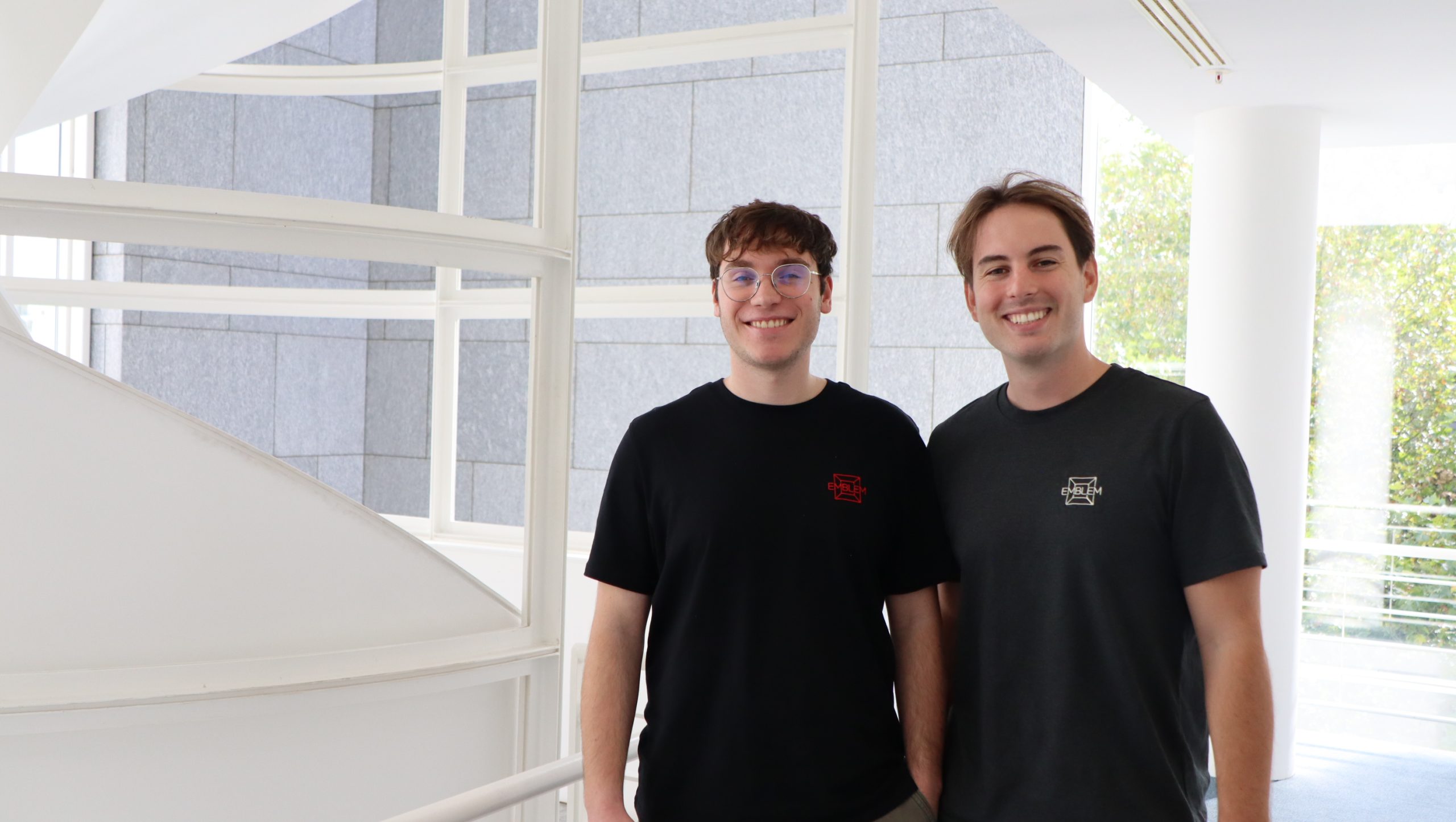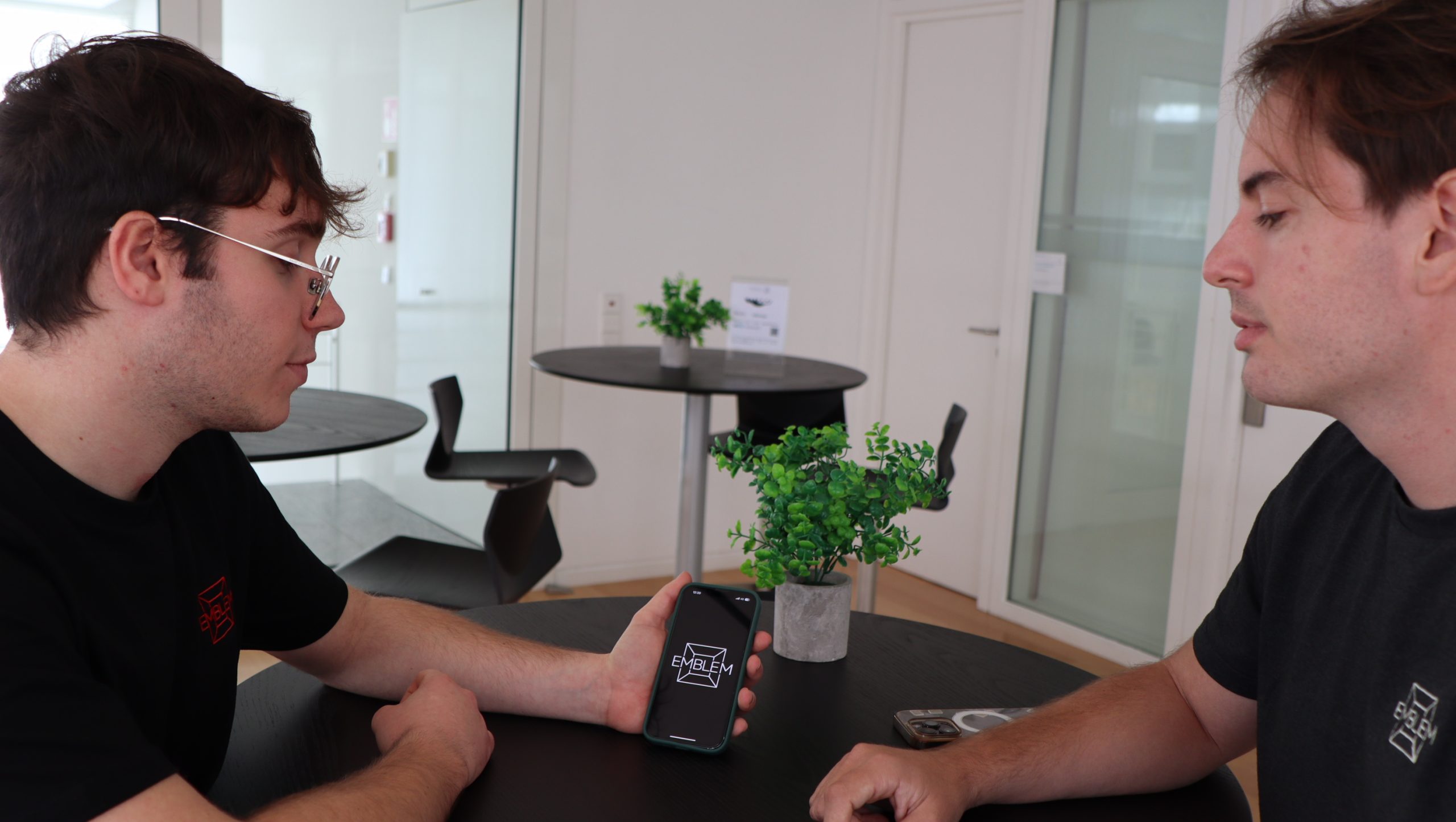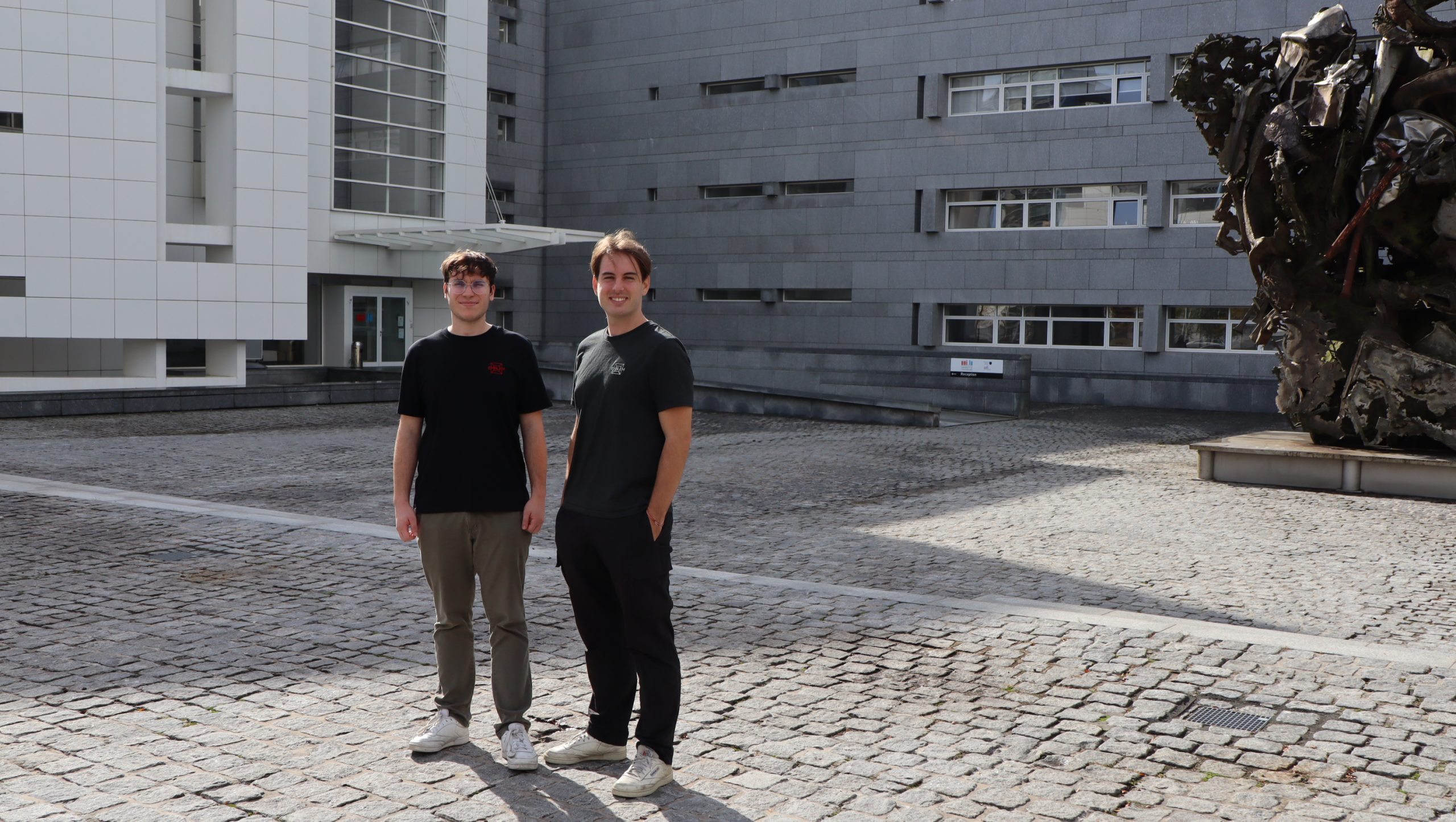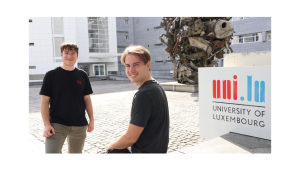Meet Miguel Curtido Linares and Daniel Michels — two students from our Faculty who recently launched their first company, Emblem. Miguel, pursuing a Master’s in Entrepreneurship and Innovation, and Daniel, a Bachelor’s in Law student, have created a social media platform that reimagines how people collect souvenirs. Emblem offers digital collectibles that capture the essence of a place through art, transforming traditional souvenirs into unique cultural experiences.
With a background in Information Technology, Miguel leads the technical side, while Daniel, drawing inspiration from his artist mother and his experiences around the world, shapes the creative and cultural vision. Together, they empower local artists and cultures and let users collect art-based digital souvenirs and create a meaningful emotional connection between travellers and the cultures they explore.
We sat down with both founders to learn what inspired them to launch their company, how to collect digital souvenirs, and how their studies at the University of Luxembourg have helped them along the way.
How did you two meet and decide to work on Emblem together?
Miguel: Daniel and I met about two years ago during the Ideation Camp organized by the University of Luxembourg Incubator and Entrepreneurship Programme. We were working on separate projects at first, but our tables were next to each other, and we ended up talking a lot. During a year, both of us worked on our own projects and by the end of the course I became more interested in Daniel’s project, Emblem, than my own. In that summer, I joined Emblem.

Miguel and Daniel at the Weicker campus
Daniel, was Emblem your idea?
Daniel: Yes, the idea came to me during Expo 2020 in Dubai, which attracted around 30 million visitors. Each nation showcased their culture in individual pavilions, reinforcing their national branding. I met an artist from the Chad pavilion trying to sell his large, expensive artworks, but most visitors were focused on collecting the more generic stamps from each pavilion. That’s when I thought, “Why not make the art more accessible by turning those stamps into artistic pieces, crafted by the people who can best represent their culture visually?” This led to the idea of creating digital souvenirs made by local artists, and instead of being just for the Expo, it would be for the entire world.
Can you explain how Emblem works? How do people collect digital souvenirs?
Daniel: Emblem is a social media where users become cultural ambassadors by collecting emblems that showcase cultures globally, beyond stereotypes. Emblems are digital souvenirs that capture the essence of specific locations, through art. When someone visits a place, they can use their GPS to collect an emblem, which represents the culture of that location. Unlike traditional souvenirs, emblems are pieces of art with endless possibilities through digitalization.
Miguel: I can give an example, I always say this was how I collected my first emblem. A couple of years ago, I visited a friend, and we spent the afternoon at a small bar, enjoying drinks and playing some games. They had great music playing the whole time we were there. Before leaving, I asked the waiter for the playlist, and he shared it with me. This playlist is an emblem because it’s a digital asset, I can’t touch it, but it has an emotional link to my experience at that place. It’s unique because only three people have it, and to get it, you have to go to that place. Every time I listen to this playlist, I’m transported back to that moment with my friend, creating a unique emotional connection.

Miguel and Daniel presenting Emblem app
That’s a nice example. And what is the difference between emblems and NFTs?
Daniel: Emblems are not on the blockchain, so they aren’t NFTs, but they do share some similarities. We see emblems as having emotional and cultural value, whereas NFTs tend to focus more on financial value. We may introduce NFT features in the future, but our focus is on storytelling through emblems.
And how do you plan to represent different cultures?
Emblem is a great vehicle for seeing and understanding cultures. We plan to collaborate with local artists who will create the emblems. We are also engaging with institutions in various countries, such as tourism offices, to facilitate these connections. We want Emblem to serve as a tool for their branding and a portal to their cultures.
And do artists get compensated for their work?
Daniel: Right now, we’re working with volunteers who believe in the project, and in the future, selected artists will be able to sell their emblems through our platform. We also plan to allow companies and institutions to create emblems as part of their branding.
How did your studies at the Faculty help shape your company? Did the courses or professors play a significant role in your journey?
Miguel: Absolutely! The Master in Entrepreneurship and Innovation has been instrumental. Throughout the programme, we had various opportunities to pitch Emblem as part of our projects. Professors, like Mickaël Geraudel, our Study Programme Director, provided invaluable feedback and mentorship, guiding us through the process of refining our business model. Every project or assignment felt like a real-world exercise in building Emblem.
Were there any specific courses or subjects that helped you the most?
Miguel: Yes, the course on business models was a game-changer for us. We wanted to find the best ways to monetize Emblem, and the frameworks we learned in that class really helped us focus and refine our strategy. The whole programme is very hands-on, and many of the assignments were tailored to support projects like ours. The faculty and community have been incredibly supportive, and I’m grateful for that.
Several professors and mentors from the Incubator also played a big role. Both Daniel and I have had great guidance from mentors like Olivier Toth, Rockhal CEO, and Pascal Wiscour-Conter, who helped us with the business side, and Diana Caputo who runs Incubator’s Venture Mentoring Service, who supported us early on.

Miguel and Daniel next to the Weicker campus
How did your classmates react when they found out you were launching your company? Did the community at the University contribute to your journey?
Miguel: They were very supportive! My classmates have seen me pitch Emblem for almost a year, so when we finally released it, they were excited to see it come to life. Many of them love travelling, and some are already testing the app. It’s great to feel like we’re not just students working on a project, but part of a larger entrepreneurial community that’s invested in our success.
Daniel, as a law student, did you use your legal skills to work on Emblem?
Daniel: While my primary focus is on the creative and cultural aspects of Emblem, my law studies have been invaluable—not just for technical matters like copyright and contracts. I initially underestimated how closely law is intertwined with Emblem’s core, but it has been crucial for developing critical thinking skills. Globalization, censorship through digital technologies, and social media are significant legal subjects, and as a platform with global aspirations, Emblem is part of the broader conversation on state regulation. Law is fundamental to our values, and we are dedicated to respecting the sovereignty of each nation, empowering them to shape their own narrative. I’m grateful to the University of Luxembourg for deepening my understanding of these topics, which is essential for navigating partnerships and strategically growing the business.
How do you plan to grow the community of collectors and artists?
Miguel: We travel a lot and connect with local artists personally, knocking on doors and spreading the word. Artists are often well-connected, so when we approach one, they tend to introduce us to others.
Where do you see Emblem in the next few years?
Daniel: We want Emblem to be global, with many institutions and artists involved, creating competition. We plan to add more features, like Emblem events and profiles for artists, so they can create and sell their work directly on the platform.
Miguel: Yes, we want Emblem to offer more than 2D art. Our goal is to broaden the range of artistic expressions by including videos, music, 3D models, and even virtual reality experiences, making the platform much richer and more immersive, serving not just as a gateway to cultures but also as a portal to your memories.
******
You can download the Emblem app for Android and iOS and start collecting your digital souvenirs now; it’s free. Follow Emblem on social media—Instagram, LinkedIn —to learn more about the company and its new features.
